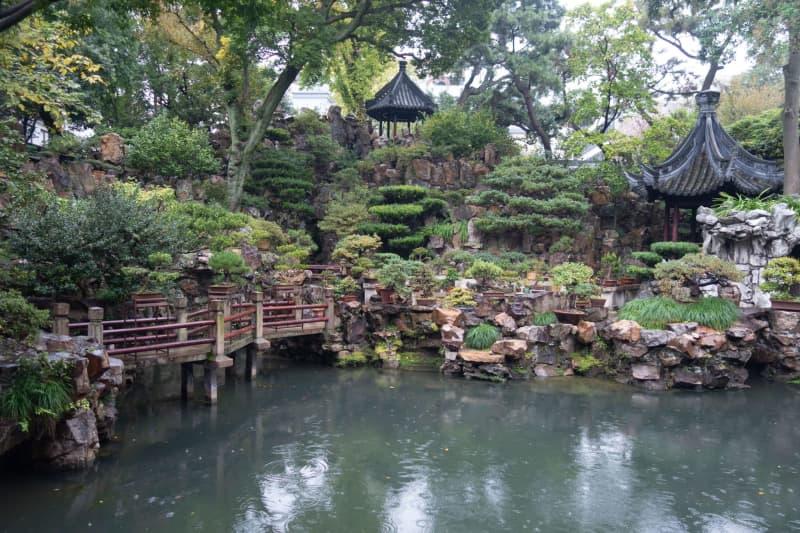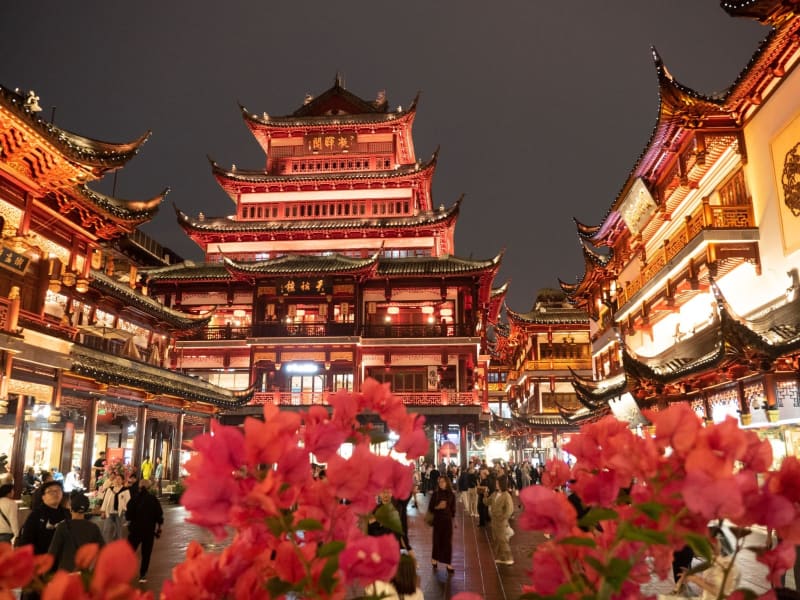Hardly anyone misses this popular selfie spot on The Bund waterfront along the Huangpu River in Shanghai with its amazing backdrop. Shanghai’s equivalent of the Manhattan skyline and the 623-metre Shanghai Tower, one of the world’s tallest buildings, dominate this cluster of skyscrapers that almost touch the skyline.
After dark, the skyscrapers come to life and colourful lights sparkle on the facades. It is an ideal spot to experience the most spectacular features of China’s metropolis of millions as freighters and tour boats bustle past on the river.
Snapshot tourists are likely to stay only briefly, although Shanghai is well worth a stopover. But a tour of this cosmopolitan city is way better than just wandering around the airport on arrival or killing time in a lounge until your connecting flight. Stopovers are common at an airline’s home airport, whether in Dubai, Singapore, Madrid or Bangkok.
Underestimated experience
Stopovers are an often-underestimated travel experience but you need to plan them well. Pack enough for perhaps two overnight stays and book tours of the main attractions online in advance. Consider buying a sightseeing bus ticket and a city pass or guided tour.
Do not worry about your onward flight. Some airlines offer stopover programmes to give passengers a chance to explore a city. If you wish to prolong your stopover by a few days, some airlines do not charge extra for the ticket while others advertise discounted accommodation.
The idea is to see as much as possible in a short time. Visitors can see Shanghai’s main attractions in an admittedly fully-packed day, says guide Pu Yihua. To get to The Bund as quickly as possible, take the metro from Pudong Airport to the city centre and get off at People’s Square or East Nanjing Road station. From there, you only have a short walk to the famous promenade with its spectacular views of the skyline.
Pu Yihua, 46, gives tourists a brief, personal insight into the history of her hometown. “When I was small, we didn’t have a fridge or a TV at home. High-rise buildings only appeared in the 1990s. Before that, there were only farmhouses and rice fields,” she says.
Green urban jungle
Shanghai shot up to become China’s top industrial centre. But not everything is plastered in concrete. Trees and flowers dot the urban jungle near the main People’s Square. And the elegant, once private, 16th-century Yu Garden in the historic centre of the Huangpu district is a prime example of Chinese garden architecture.
“The philosophy behind it foresaw living in an idyllic, harmonious oasis,” says Pu. A new vista appears around every corner – a pond, the Dragon Wall, natural sculptures made of perforated limestone, walkways, ancient giant trees such as a ginkgo and a magnolia.
Yet, historical buildings are the exception in Shanghai. One is the Jade Buddha Temple, built in 1882 in the Jing’an district. Similar to other Asian cities, gifts of incense dangle from bonsai trees and lion sculptures on inscribed lucky ribbons. Visitors to the Hall of Heavenly Guardians must cross extremely high thresholds. “They keep evil spirits away because spirits have no knees,” Pu says.
The refurbished old town has a Disneyesque feel but its fancy facades and rooftops have a certain charm, especially after dark when the lights are on. This area was once an ordinary residential buildings before the state turned it into a tourist spot and shopping centre with boutiques, restaurants, teahouses, cafes and souvenir shops.
The sprawling skyscrapers and Shanghai Tower in the Lujiazui financial district dominate the area. The lift shoots up 546 metres to the glazed viewing floor in just under a minute. Unfortunately, the view is sometimes obscured by haze.
One intriguing destination is the Shanghai Propaganda Poster Art Centre, tucked away in a skyscraper in the Changning district. The exhibits include modern documents about contemporary communist beliefs and are, of course, devoid of any critical opinions. “The posters used to hang in schools, universities, factories and offices,” says director Yang Peiming, who compiled the unusual collection in the state-funded museum.
Many historical posters have been destroyed, he says. Instead, the walls are covered in posters of a heroic-looking Mao Zedong, who founded the People’s Republic of China and whose totalitarian rule is linked to millions of deaths in famine, executions and prison labour.
Along Luzhi’s canals
Depending on the length of your stopover, you might get a chance to visit one of well over 10 water villages like Luzhi near the city. Tour boats bob along its network of canals and under bridges such as the Bridge of Happiness, the Bridge of Eternal Peace and the Bridge of Fragrant Flowers.
A little further along in Luzhi, the smell of tofu hangs in the air at a food stall. Shanghai has no shortage of tasty delicacies. Try crispy sweet and sour pork served in a bowl of ice cubes – it is surprisingly delicious.
Mao in heroic poses at Shanghai Propaganda Poster Art Centre. Andreas Drouve/dpa-tmn

Yu Garden in Shanghai, a masterpiece in 16th century Chinese garden architecture, in Huangpu district, seen on a stopover in Shanghai. Andreas Drouve/dpa-tmn
Luzhi water town has much to see and taste. Andreas Drouve/dpa-tmn
Read the full article here


